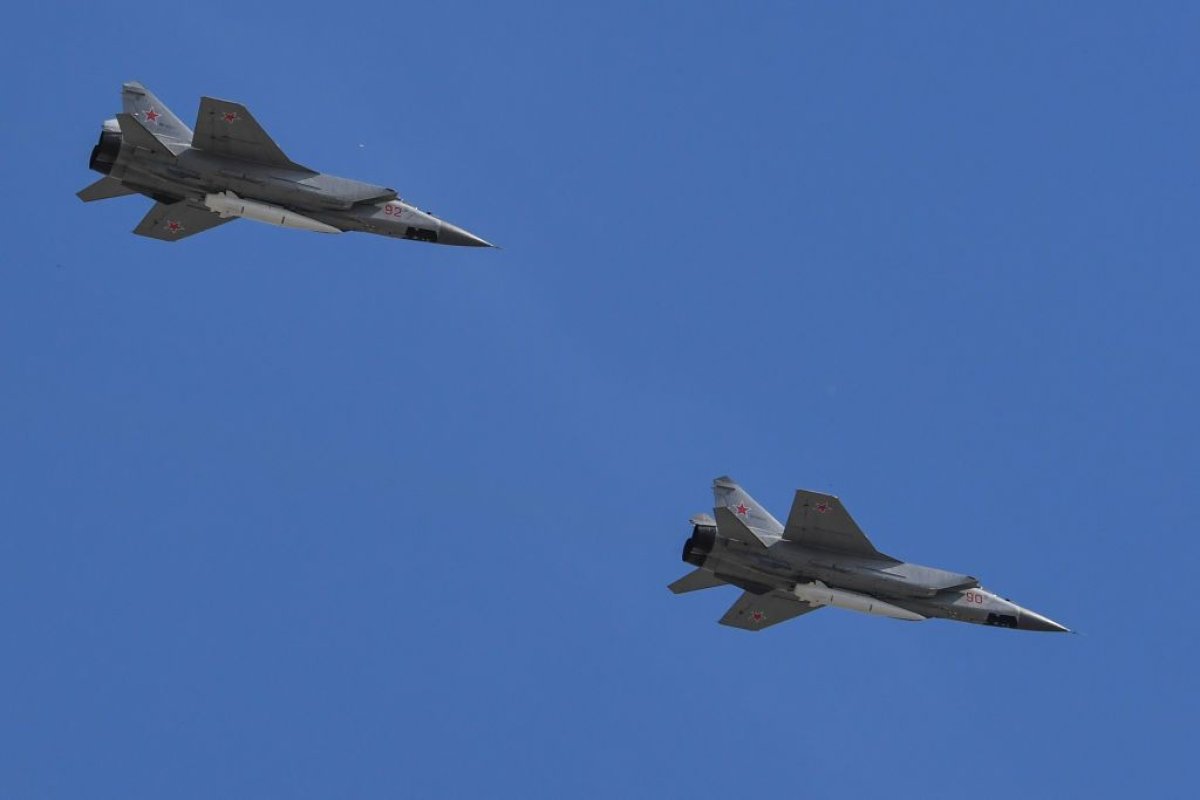Concerned about Russia and China's development of new hypersonic weapons capable of traveling at 20 times the speed of sound, the Pentagon is urgently seeking to develop a defense.
The Defense Advanced Research Project Agency (DARPA)—which develops new technology for U.S. military use—announced last week it was soliciting proposals for its Glide Breaker hypersonic weapons interception program.

DARPA seeks to "develop and demonstrate a technology that is critical for enabling an advanced interceptor capable of engaging maneuvering hypersonic threats in the upper atmosphere," the agency said in a statement.
"Glide Breaker will develop an enabling technology critical for an advanced interceptor capable of defeating hypersonic vehicles. Key aspects of the Glide Breaker program are classified," the statement continued.
Back in March, General John Hyten, head of U.S. Strategic Command, warned that improvements to missile defenses were needed to counter the threat from hypersonic weapons.
"China has tested hypersonic capabilities. Russia has tested. We have as well. Hypersonic capabilities are a significant challenge," Hyten told CNN. "We are going to need a different set of sensors in order to see the hypersonic threats. Our adversaries know that."
Hypersonic weapons are defined as those with a speed of Mach 5, or more than 3,806 miles per hour.
The 'boost-glide' weapons—also known as hypersonic glide vehicles (HGVs)—are fired into space and use aerodynamic forces to sail at high speeds to their targets on a flight trajectory similar to an airplane, evading detection by existing U.S. radar and satellites.
In October Russian President Vladimir Putin announced that the country would deploy hypersonic weapons "in the coming months." In his state of the nation address earlier in the year he had heralded the weapons as "invincible."
Russia's weapons include a nuclear-powered cruise missile, a nuclear-powered underwater drone and new hypersonic Avangard missiles. Two of the weapons will be ready for military deployment by 2020, U.S. intelligence sources told CNBC.
In an interview with the National Interest, George Nacouzi, an engineer at the RAND Corp. think tank, said that boost-glide systems were maneuverable, meaning they evade interception.
"The most obvious challenge is the maneuverability of HGVs, which makes it very difficult to maintain track on the vehicle and plan an intercept course using our current capabilities," he said. "Flight altitude is also challenging for our current systems. The HGV may fly too high for many endo-atmospheric interceptors and too low to be detected and tracked early by long range radars."
In testimony to Congress, Hyten described what would be required from an effective interception system, stating "the first thing we need is better sensor capability, better tracking capabilities to make sure we can characterize and then respond to that threat."
He also called for improved U.S. warheads, reported CNN, essentially "better kill vehicles on the top of our interceptors so that those kill vehicles become more and more lethal."
Uncommon Knowledge
Newsweek is committed to challenging conventional wisdom and finding connections in the search for common ground.
Newsweek is committed to challenging conventional wisdom and finding connections in the search for common ground.
About the writer
To read how Newsweek uses AI as a newsroom tool, Click here.








